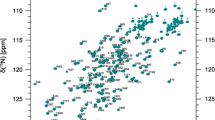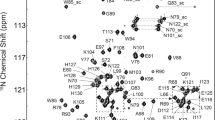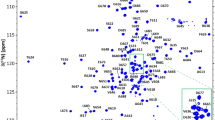Abstract
Transfer of genetic material is the main mechanism underlying the spread of antibiotic resistance and virulence factors within the bacterial community. Conjugation is one such process by which the genetic material is shared from one bacterium to another. The DNA substrate is processed and prepared for transfer by a multi-protein complex called the relaxosome .The relaxosome of plasmid R1 possesses the most crucial enzyme TraI which, both nicks and unwinds the dsDNA substrate. TraI comprises 1765 residues and multiple functional domains, including those catalyzing the DNA trans-esterase (relaxase) on the dsDNA designated for a conjugative transfer and DNA helicase activities. Structural and functional studies have been reported for most of the TraI except the C-terminal domain spanning from residue 1630 to 1765. This region is the least understood part of TraI and is thought to be highly disordered and flexible. This region, being intrinsically disordered, is hypothesized to be serving as an interacting platform for other proteins involved in this DNA transfer initiation mechanism. In this work, we report the 1H, 13C, 15N resonance assignment of this region as well as the secondary structure information based on the backbone chemical shifts.
Similar content being viewed by others
Biological background
Bacterial conjugation is a major mechanism driving rapid dissemination of genetic information among the bacterial community, leading to the spread of antibiotic resistance and virulence factors. This transfer is important for bacteria to adapt and evolve in variable environments. Transfer of DNA also takes place between the bacterial and eukaryotic communities (Christie et al. 2017; Ilangovan et al. 2015).The most studied conjugation system in Gram-negative bacteria is the F family of plasmids, which includes F, R1 and pED 208. The protein investigated in this work, TraI, is encoded by the R1 plasmid. Gram-negative bacteria utilize type IV secretion systems (T4SS) for a successful transfer of the conjugative plasmid from the donor to the recipient cell. In the donor, conjugation is initiated by three major components known as the relaxosome, transferosome and coupling proteins. The relaxosome is a multi-protein complex, which prepares the conjugative plasmid in the cytoplasm by nicking and unwinding it. The transferosome consists of the proteins, which are involved in the T4SS pilus formation and retraction, to make a close physical contact between donor and recipient cells. Finally, the coupling proteins ‘couple’ components of the relaxosome to the transferosome for a successful substrate transfer (Lawley et al. 2003).
TraI of plasmid R1 is a multi-functional enzyme of the relaxosome that is essential for the conjugative transfer of F like plasmids (Wong et al. 2012; Lang et al. 2010, 2011; Haft et al. 2006). To specifically initiate the process of DNA transfer, R1 TraI first nicks a unique phosphodiester bond at nic site within the plasmid origin of transfer (oriT), binds covalently to the 5′ end of the nicked plasmid stand through a tyrosine residue and finally unwinds the nicked strand of plasmid DNA with the help of its functional helicase domain (Matson and Ragonese 2005). Recently a cryo-EM structure of the three functional domains of R1 TraI: the DNA trans-esterase, vestigial helicase and an active helicase, was published (Fig. 1). These authors found that R1 TraI dimerizes in the presence of DNA including the oriT sequence resulting in a well-coordinated function of trans-esterase and relaxase domains for the substrate translocation (Ilangovan et al. 2017).
Apart from these three-functional domains there is a fourth poorly characterized C-terminal domain. This domain consists of 295 residues (1461 to 1756) and is mostly flexible. It has been hypothesized to function as a platform for interaction with other relaxosomal proteins. Some studies also emphasize that the far C-terminal domain interacts with ds DNA (Matson and Ragonese 2005; Cheng et al. 2011; Ragonese et al. 2007).
There is no involvement of R1 TraI’s C-terminal domain on the regulation of its own nuclease and relaxase activity. A crystal structure of a 169 residue fold in the C-terminal domain (residues 1461 to 1630) has been reported however, structural and functional details of the far most C-terminal 126 residues (R1 TraIC126, residues 1630 to 1756, 14.3 kDa) are lacking. Due to the fact that this region could never be crystallized or observed in Cryo-EM, it was thought to be highly flexible and disordered (Ilangovan et al. 2017). An analysis of R1 TraIC126 (1630 to 1756) by the program COILS, predicted three coiled-coil domains (Guogas et al. 2009). R1 TraIC126 does not have an orthologue nor does it share sequence homology, thus this novel region appears to play a crucial role exclusively for R1 TraI. In this study, we present the 1H, 13C and 15N NMR resonance assignments and the secondary structure information obtained by Talos-N (Shen and Bax 2013) based on the backbone chemical shift values.
Recombinant protein cloning, expression and purification
R1 TraIC126 was cloned into pET Z2 vector (EMBL Heidelberg) (Bogomolovas et al. 2009) by classical cloning methods where full length R1 TraI was used as a template. The two primers: R1 TraIC126-F 5′-AGTCCATGGGCAATAGCGTCCAGCCG-3′ and R1 TraIC126-R 5′-TTTGGTACCCTAATCGCCGCCCAA-3′, were used to create the R1 TraIC126 encoding insert by PCR amplification. pET Z2 contains a 6xHis, IgG binding domain (Z-domain), TEV cleavage site, followed by a multi-cloning site and carries a kanamycin resistance gene. Restriction digestion was carried out with NcoI and KpnI to create sticky ends for both the amplified R1 TraIC126 gene fragment and the template for subsequent ligation.
This pET Z2 R1 TraIC126 construct was transformed into BL21 (DE3) cells (Thermofisher, Waltham, US) and expressed in M9 media (containing 1 g/l 15N ammonium chloride and 3 g/l 13C glucose) for isotope labelling of proteins for NMR experiments (M9 minimal medium (standard) 2010). In 1 L of culture, the protein expression was induced with 1 mM (final concentration) of Isopropyl-β-D-thiogalactopyranoside (IPTG) at an OD600 nm of 0.8 and growth was continued with shaking at 20 °C for 16 h.
The cells were harvested and re-suspended in lysis buffer (50 mM Na2HPO4, 10 mM imidazole, 300 mM NaCl pH 8.0). Re-suspended cells were disrupted using sonication and centrifugation at 13,500 rpm was carried out to separate the cell pellet from the supernatant. The supernatant was filtered through a 0.45 µm filter and protein purification was performed using Ni–NTA affinity chromatography. An equilibrated 10 ml HisTrap column (GE Healthcare, Merck KGaA, Darmstadt, Germany) (with HisTrap flow through buffer: 50 mM Na2HPO4, 10 mM imidazole, 300 mM Nacl, pH 8.0 and HisTrap elution buffer: 50 mM Na2HPO4, 500 mM imidazole, 300 mM Nacl, pH 8.0) was loaded with 10 ml of filtered supernatant and the protein was eluted with HisTrap elution buffer, using an imidazole gradient. The eluted protein was subjected to an overnight TEV cleavage reaction. For this reaction, TEV protease (1:50 TEV protease to protein ratio), 4 mM β-mercaptoethanol was added to the sample and dialyzed against 2 L of dialysis buffer (50 mM Na2HPO4, 10 mM imidazole, 300 mM NaCl, 4 mM β-mercaptoethanol, pH 8.0) for 16 h. This step removes the 6xHIS and Z-domain. A second Ni–NTA purification separated the cleaved 6xHis and Z domain, eluting the protein during the flow through step. Final purification was done by size exclusion chromatography using a Superdex 75S column (GE Healthcare, Merck KGaA, Darmstadt, Germany) in 50 mM Na2HPO4, 300 mM Nacl, pH 8.0. The purified protein was dialyzed into the NMR buffer (50 mM Na2HPO4, 50 mM Nacl, pH 6.5) for 16 h, before acquiring the NMR experiments.
NMR experiments
NMR measurements were carried out on a Bruker Avance III 700 MHz spectrometer equipped with a cryogenically cooled 5 mm TCI probe head. All the experiments were carried out at 298K. 10% D2O was added to the sample and the following triple resonance experiments were acquired for the assignment of the backbone atoms resonances: 1H–15N HSQC, 1H–13C HSQC, HNCACB, HNCA, HN(CA)CO, HNCO, HN(CO)CA and HNCANNH. For side-chain assignments, CC(CO)NH, H(CCO)NH, HBHA(CO)NH and HCCH-TOCSY were acquired. Complete assignments and confirmation thereof was accomplished using 15N-edited NOESY-HSQC and 13C-edited NOESY-HSQC (John et al. 2006). Standard Bruker pulses were used to acquire all the above mentioned triple resonance experiments. The spectra were processed using NMRPipe (Delaglio et al. 1995) and analyzed by CCPNmr (Vranken et al. 2005).
Assignments and secondary structure information
Figure 2a shows the 1H–15N HSQC spectrum of R1 TraIC126 and the apparent limited peak dispersion along the hydrogen dimension, all the backbone amide peaks between 7.6 and 8.7 ppm, shows that R1 TraIC126 is at least partially disordered. The most overlapped region of the HSQC is shown enlarged in Fig. 2b. With the help of the above mentioned backbone spectra, 94% of all 1H, 15N, 13C′, 13Cα/β, 97% Hα and 93% Hβ resonances were assigned. Asn2 was not found in the spectra. The amide nitrogen signals of the five proline residues along with Ser3 and Glu81 could not be assigned. Due to extensive line broadening or overlapping of peaks Arg30 Cβ, Arg34 Cβ, Arg35 Cβ, Pro6 C′, Pro80 C′ and the side chain amide of asparagine and glutamine residues were not assigned. The unassigned peaks in the 15N HSQC do not show correlations in the triple resonance experiments and therefore probably belong to the 6% of NH groups which could not be assigned.
a1H–15N HSQC spectrum of R1 TraIC126 acquired at 700 MHz and pH 6.5 at 298K with 10% D2O. The number and the respective single letter code of amino acids are indicated at each peak. Residue numbers 2 to127 of R1 TraIC126 correspond to residues 1630 to 1756 in the full length TraI. Met1 is added during the cloning and is not a part of R1 TraIC126. b The zoomed region of the 1H–15N HSQC spectrum, highlighted in (a). BMRB access number 27,596
Secondary structure information was obtained from the backbone chemical shifts processed using Talos-N. The prediction shows major disordered regions, as expected from the 1H–15N HSQC spectrum’s poor peak dispersion along the hydrogen dimension. Talos prediction shows that two stretches of helices, spanning from residues 16 to 41 and 102 to 111 are connected through a loop region. The residues 3 to 15, 42 to 101 and 112 to 127 are predicted to be loop / disordered regions (Fig. 3).
References
Bogomolovas J, Simon B, Sattler M, Stier G (2009) Screening of fusion partners for high yield expression and purification of bioactive viscotoxins. Protein Expr Purif 64(1):16–23
Cheng Y, McNamara DE, Miley MJ, Nash RP, Redinbo MR (2011) Functional characterization of the multidomain F Plasmid trai relaxase-helicase. J Biol Chem Apr 8(14):12670–12682
Christie PJ, Gomez Valero L, Buchrieser C (2017) Biological diversity and evolution of type IV secretion systems. Curr Top Microbiol Immunol 413:1–30
Delaglio F, Grzesiek S, Vuister GW, Zhu G, Pfeifer J, Bax A (1995) NMRPipe: a multidimensional spectral processing system based on UNIX pipes. J Biomol NMR 6(3):277–293
Guogas LM1, Kennedy SA, Lee JH, Redinbo MR (2009) A novel fold in the TraI relaxase-helicase c-terminal domain is essential for conjugative DNA transfer. J Mol Biol 20(2):554–568
Haft RJ1, Palacios G, Nguyen T, Mally M, Gachelet EG, Zechner EL, Traxler B (2006) General mutagenesis of F plasmid TraI reveals its role in conjugative regulation. J Bacteriol 188(17):6346–6353
Ilangovan A, Connery S, Waksman G (2015) Structural biology of the Gram-negative bacterial conjugation systems. Trends Microbiol 23(5):301–310
Ilangovan A, Kay CWM, Roier S, El Mkami H, Salvadori E, Zechner EL, Zanetti G, Waksman G (2017) Cryo-EM structure of a relaxase reveals the molecular basis of DNA unwinding during bacterial conjugation. Cell 4(4):708–721
John, Cavanagh et al (2006) Protein NMR spectroscopy, 2nd edn. Academic Press, Cambridge
Lang S, Gruber K, Mihajlovic S, Arnold R, Gruber CJ, Steinlechner S, Jehl MA, Rattei T, Fröhlich KU, Zechner EL (2010) Molecular recognition determinants for type IV secretion of diverse families of conjugative relaxases. Mol Microbiol 78(6):1539–1555
Lang S, Kirchberger PC, Gruber CJ, Redzej A, Raffl S, Zellnig G, Zangger K, Zechner EL (2011) An activation domain of plasmid R1 TraI protein delineates stages of gene transfer initiation. Mol Microbiol 82(5):1071–1085
Lawley TD, Klimke WA, Gubbins MJ, Frost LS (2003) F factor conjugation is a true type IV secretion system. FEMS Microbial Lett 15(1):1–15
M9 minimal medium (standard) (2010) Cold spring harbor protocols. http://cshprotocols.cshlp.org/content/2010/8/pdb.rec12295.short. Accessed 20 Sept 2018
Matson SW, Ragonese H (2005) The F-plasmid TraI protein contains three functional domains required for conjugative DNA strand transfer. J Bacteriol 187(2):697–706
Ragonese H, Haisch D, Villareal E, Choi JH, Matson SW (2007) The F plasmid-encoded TraM protein stimulates relaxosome-mediated cleavage at oriT through an interaction with TraI. Mol Microbiol 63(4):1173–1184
Shen Y, Bax A (2013) Protein backbone and sidechain torsion angles predicted from NMR chemical shifts using artificial neural networks. J Biomol NMR 56(3):227–241
Vranken WF et al (2005) The CCPN data model for NMR spectroscopy: development of a software pipeline. Proteins 1(4):687–696
Wong JJ, Lu J, Glover JN (2012) Relaxosome function and conjugation regulation in F-like plasmids—a structural biology perspective. Mol Microbiol 85(4):602–617
Acknowledgement
Open access funding provided by Austrian Science Fund (FWF). Funding was provided by Austrian Science Fund (Grant No. W901).
Author information
Authors and Affiliations
Corresponding author
Rights and permissions
Open Access This article is distributed under the terms of the Creative Commons Attribution 4.0 International License (http://creativecommons.org/licenses/by/4.0/), which permits unrestricted use, distribution, and reproduction in any medium, provided you give appropriate credit to the original author(s) and the source, provide a link to the Creative Commons license, and indicate if changes were made.
About this article
Cite this article
Krishna, B., Gubensäk, N., Wagner, G.E. et al. 1H, 13C, 15N resonance assignment of the C-terminal domain of the bifunctional enzyme TraI of plasmid R1. Biomol NMR Assign 13, 121–125 (2019). https://doi.org/10.1007/s12104-018-9863-y
Received:
Accepted:
Published:
Issue Date:
DOI: https://doi.org/10.1007/s12104-018-9863-y







